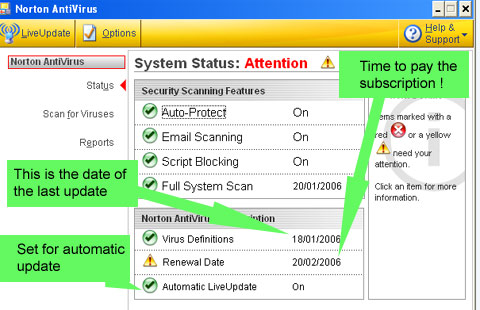 FUNCTIONAL SKILLS
FUNCTIONAL SKILLS COMPUTER VIRUSES
COMPUTER VIRUSES THEORY
THEORY4. How can they be removed?
As computer viruses became more of a menace, companies began to develop software to detect and remove them. These were named 'anti-virus software'.
There are a number of anti-virus programs available for wiping out viruses for example Norton, McAfee and Sophos.

When the anti-virus software recognises a virus pattern, it will alert the user, and ask them whether they want to remove the virus and clean the system, or whether they simply want to 'quarantine' the virus.
Challenge see if you can find out one extra fact on this topic that we haven't already told you
Click on this link: Anti virus Software
New and more damaging viruses are being written all the time and so to keep up with these new threats, the anti-virus companies provide constant updates to their software. Normally, you log on to the internet and the software will update itself either automatically or after a certain period set by you.
There is usually a small annual fee involved for this service, but it is a small price to pay for peace of mind.
The screen below is a typical anti-virus management screen, it shows the date of the last update, whether you want it to update itself automatically and it also shows when you last carried out a full virus scan.

However, there is a small disadvantage to using anti-virus software. Installing new software can become very awkward as the anti-virus software 'thinks' that there is a virus at large as the new software installs itself into various directories and system areas. This is why installation routines often advise that anti-virus software be switched off during installation.
Copyright © www.teach-ict.com



